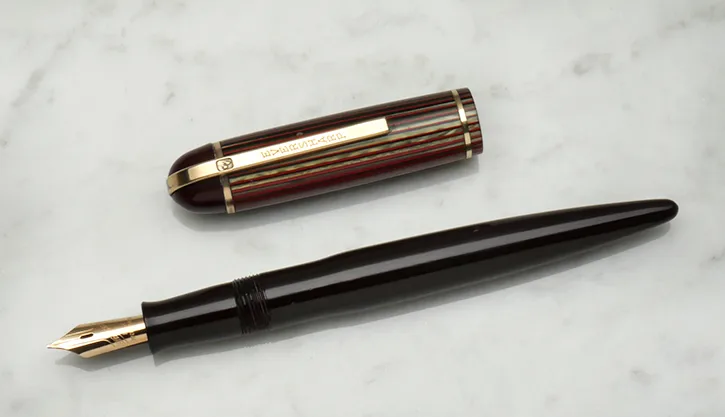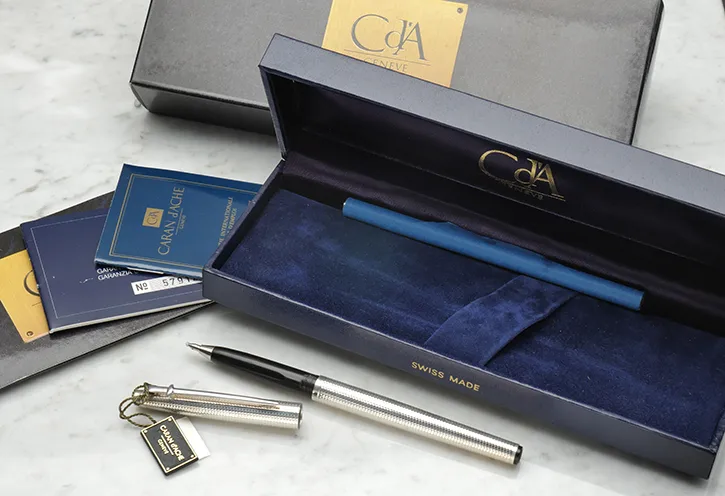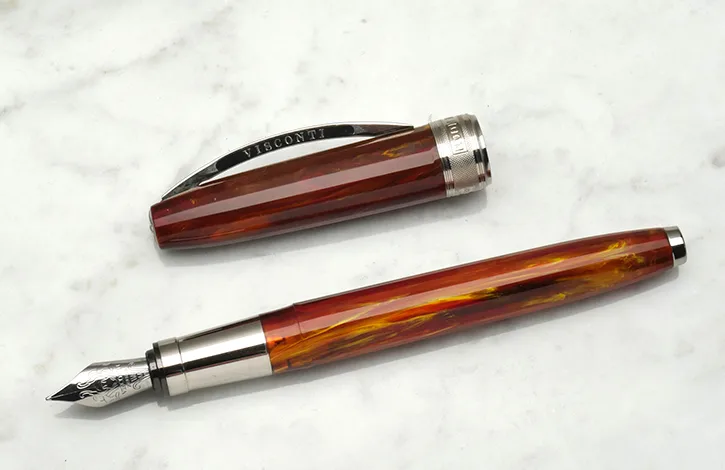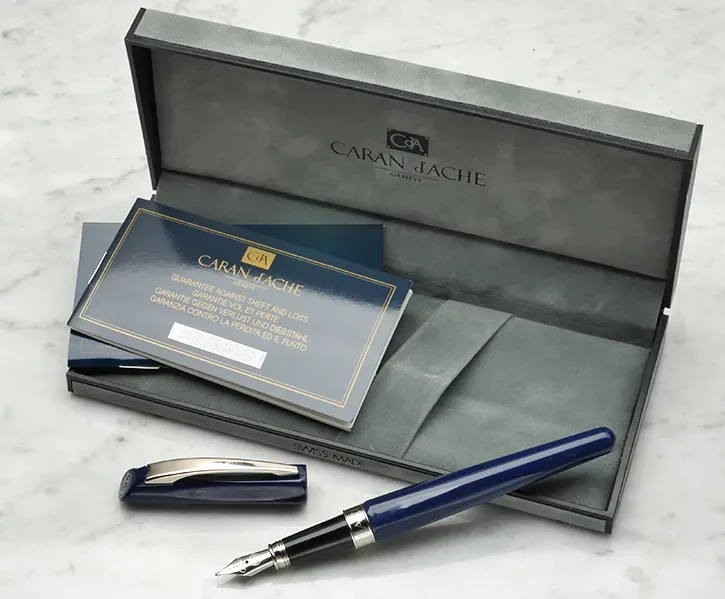Hungary's fountain pen restorer lives in Budapest, and was received by Viktor Orban
interview by Tünde Tálas
We met Tamás Szűcs in the centre of Budafok, on the outskirts of Budapest, in the Spiller confectionery, where he brought the smallest and largest piece of his fountain pen collection. In our report we introduce the country's only pen restorer, who takes his own photos of his antique pens, which he assembles while reflecting on aesthetic issues and the abstract things in life. Statistically, there is no data on the percentage of the population that uses fountain pens, but it is safe to say that they are mainly used by intellectuals, so don't be surprised if the country's only fountain pen restorer presents the Hungarian prime minister Viktor Orban with an antique pen and even initiates a correspondence with Queen Elizabeth II.

What is your original profession?
I graduated in photojournalism from the MÚOSZ (Association of Hungarian Journalists). My professional role model was the famous Péter Korniss, who is well known photographer in Hungary. I envied him for his many exciting trips to Transylvania, which he photographed. I worked as a photographer for Bravo magazine. I experienced that my colleagues saw themselves as artists, even though none of them knew the concept of art, so I applied to Pécs to study Art and Communication. I was very interested in the historical background of basic concepts such as truth, good or beauty, and what art really is. Sometimes I get a call from a client who wants a nice pen for his mother. I ask her what she means by a nice pen? There are very different types of people and tastes. They often change in a lifetime. Everybody has their periods.
How did you become interested in the world of pens?
I inherited a lot of pens from my father, and some knowledge of how to repair and restore them. 11 years ago, when my son was born, I was fired from my job the next day and I felt under some pressure to do something I would like to do. I tried to find a job in another profession, but I became more and more absorbed in fitting pens. The older nibs are very fragile, it's not always how you disassemble them, because a lot of them break when you stretch them.
Did you inherit any valuable pens?
There were some valuable pens among them, but there were also some worn pieces that could be made more valuable with some fitting. I also swapped pens from other collectors' collections. I used fountain pens even in primary school, and in the 70s and 80s these pens were more common than they are today. The lower-end pens of the Rákosi and Kádár regime were common at that time, such as the Pioneer and Luxus brand pens. In addition to Chinese pens, the Czech Centropen and the Romanian Flaro brands were also widely used, alongside the older Tintenkuli and Pelikan. The fitting of the pens is not particularly difficult, but requires practice, however, if there is a hairline crack, you have to be very careful when repairing it. There are also pens that are 100-150 years old, but pens without suction mechanisms, known as dipping pens, are rarely used. The 1920s, when fountain pens with suction mechanisms (i.e. they could be filled) became popular, was when fountain pens really became popular, but the advent of the ballpoint later dealt a serious blow.
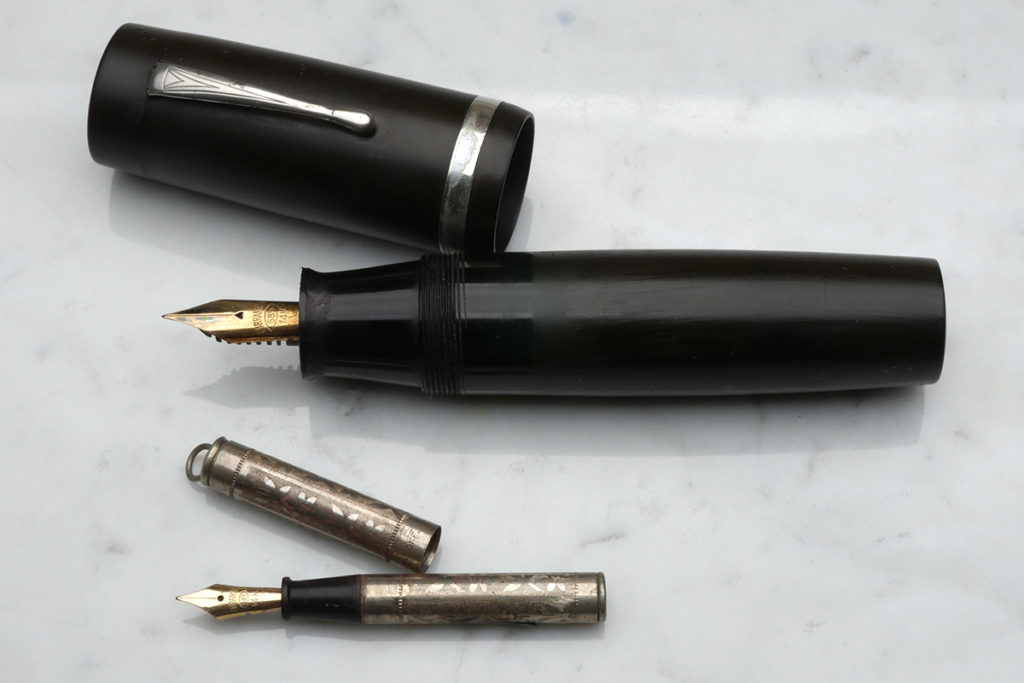
The smallest and largest piece in the collection in one photo
What are the parts of a pen?
The nib is the heart of the fountain pen. They used to be made of gold because the acid ink of the time would have eaten it. Gold-plated nibs also stood up well to soaking. I've never held a pen nib weighing more than a gram, so the weight of the gold doesn't "throw off" the price of the pen. Some of the older nibs are flexible, which means that if you just gently touch the paper, you write thinly, but if you press down on the paper, you write thickly. The flexible nib is interesting because it is a character trait of who writes with such dynamics or how hard the pen is pressed. Calligraphy was once taught because handwriting is a good reflection of a person's personality. In the age of information technology, it has taken a back seat, but in many parts of the world, fountain pen writing is enjoying a renaissance. Handwritten letters used to be important because they could tell who the writer was. Even in the 1990s, handwritten CVs were still required, but this has now been completely phased out in Hungary. The pen body is the other part of the pen. This is the more durable part, as the nib can often be replaced. I have 70-80 year old steel nib pens that are in perfectly good condition, but of course there are also the opposite. It's the polishing of the tip that is the hardest part, you really have to get good at it. I grind under a microscope, the big grinds are done by machine, the finer ones by hand. I also repair exclusive fountain pens. It's a hobby I really like, "the pens give me wings". It's all I do at the moment.

How many times a day are you called for pen repairs?
You will be surprised, but sometimes several times a day. Luckily, gravity is my friend! Anyone who drops a fountain pen will call me, because they'll be surprised to find that I'm the only one who does it, so they'll end up with me. Usually a pen falls on its nib like a slice of bread on its buttered half.
What percentage of the population uses a fountain pen?
I don't know, but if only 10,000 people use fountain pens, or 0.01% of the population, that would still be a big number, but there is undoubtedly a greater culture of it in the West. You would never know who uses a fountain pen in this country. A lot of university students and intellectuals. In ancient Egypt, Thoth was the god of wisdom, science and magic, the patron of physicians, as well as writing. He was often depicted holding a papyrus and a scroll. This circle is still framed by writing: lawyers, politicians, teachers, doctors and priests typically use fountain pens.
Why use a fountain pen?
Ink has a smell (there is also perfumed ink) and the nib has a sound. These are sensory things that make a tool more personal. It gives a unique style with a characterful, beautiful writing image. A good fountain pen moves our thoughts viscerally, makes writing an experience, opens gates and pours words and sentences with light movements. It also gives us a reflection of our mental and emotional state. Harmony, or lack of it, is immediately reflected in our writing. A pen can accompany a person throughout their life. If we think of every tool in our environment as an extension of an organ, the hammer as our fist, the bicycle as our foot, the pen as our brain to project our thoughts onto paper. The pen is a strange instrument because ink can also be equated with blood or the 'stream' of thought. When we dipped the pen, each dip gave us time to formulate the next sentence, so that our thoughts were more in sync with our writing. For those who have never written with a fountain pen, be sure to try it at least once.
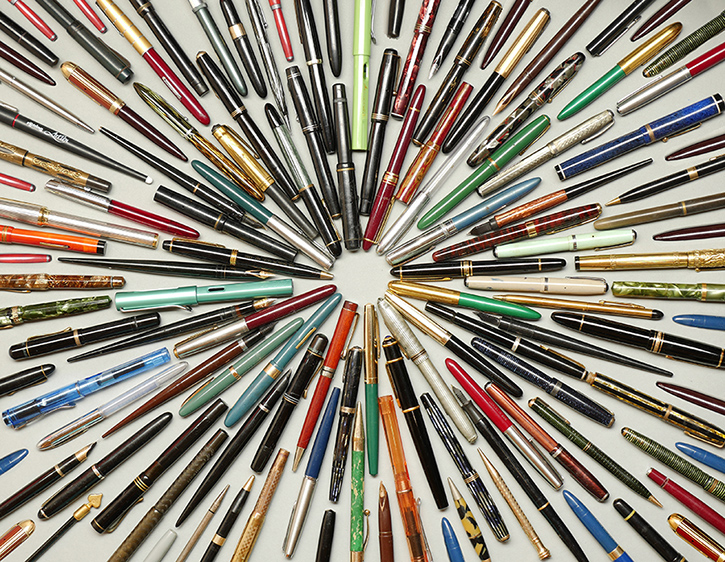
Do you feel that the spread of mobile phones is reducing the demand for fountain pens?
No, the segment of the population that uses this device is holding on to it. I have clients who use only one pen, but some use more and some are maniacal collectors. Those who live a hectic lifestyle or often abandon their objects are more thoughtful about using fountain pens. There can be great joy in repairing a loved one's pen that hasn't been used for 30 or 40 years, because it's a sensual moment when a pen rings out on paper after all that time. Many people keep their pens in a drawer, thinking that they can't be repaired anyway, even though 95% of pens can be brought back to life.
Can you pass on your knowledge to the next generation?
I have been approached to teach, but I have no interest in teaching the competition. When my son is older, maybe I'll tell him some secrets. Pen making is a meditative activity, I often associate it with listening to music.
Your workshop is at the beginning of the Nagytétényi road. When did you move here?
We moved to Nagytétény, Arany János út, in 2009, and from there in 2018 to the building of the former first savings bank in Budafok, which was built around 1890. The workshop is part of the apartment, much to the "delight" of my partner. My clients can find me on the internet, on my own website (tompens.com). Of course they also find me from the district. I also repaired Mayor Ferenc Karsai's pen (it fell on the tip), he uses a nice modern Parker pen.
There is a photo on his website which suggests that he has met the Prime Minister about the pen.
Yes, I recently put the photos on my site, I met with Viktor Orbán at the end of 2021. My dad was a big Fidesz supporter and mentioned several times that he would like to give one of the pens to the PM, but he never had the opportunity to do so. I remembered this, and in a handwritten letter I offered the Prime Minister a beautiful Hungarian pen from my inheritance, and after a few weeks I was invited to his residence, the Carmelite Monastery.
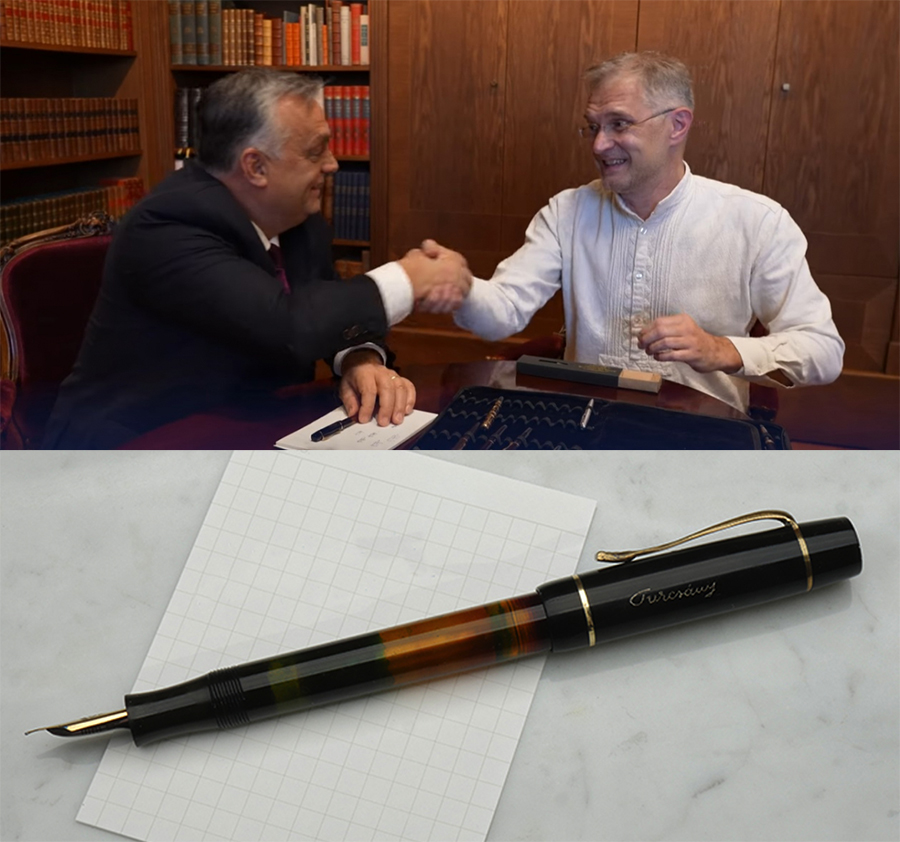
What pen did you give Viktor Orbán?
An antique Turcsány transparent gold-tipped flexible pen from the 1930s. Antal Turcsány had a pen factory between the two world wars, he was the first fountain pen manufacturer in Hungary, I wrote about it in detail on my website. The Turcsány fountain pen was a household name in the 1930s. He made very beautiful, stylish pens. The Prime Minister was very pleased with the gift and gave me his own fountain pen as a kind gesture. He also showed me around the Carmelite. I felt it was an unmissable experience, so I took my 10-year-old son with me. I knew that I would get a lot of criticism for this (I did), because in Hungary, appearing next to any politician is a serious risk because it arouses the passions of most people. Viktor Orbán is a very divisive person. There is hardly anyone who has neutral feelings towards the Prime Minister. I knew that and I accepted it. And I told my son that he could not miss a meeting with a person who had made the history of Hungary and perhaps of Europe. I did not meet God or the devil when I shook hands with the Prime Minister on 29 November, 2021. I was frankly surprised by his welcome. It was an important meeting in my life, I think in my son's life. I also wanted to meet the British Queen Elizabeth II because I know she is very fond of pens and there was one thing that always struck me in the photographs of her.
Did you manage to meet the British Queen?
Unfortunately the Queen was not able to see me, she was indisposed. I wanted an answer to something important to me. Parker is the official pen supplier to Queen Elizabeth and the Royal Court, but in the photos of the Queen's fountain pens, it was not Parker, but Pelikan or Cartier fountain pens. I did not understand this. That's what I wanted to get an answer to. I know that the Queen is very fond of feathers, and not just on her hats. There is a big cult of fountain pens in the West, much bigger than here.
Did you get an answer to your question?
I received a polite letter thanking me for following Queen Elizabeth II's affairs so closely and for bringing this to your attention. Perhaps next time...
Read the article here (Hungarian language).
2023. 03.

